Installing a freestanding tub correctly is a common challenge for homeowners. These tubs symbolize luxury and relaxation, turning a simple bathroom into a spa-like retreat.
However, proper installation is crucial for comfort and long-term performance. Each step, from preparing the space to positioning the tub and connecting the plumbing, is important.
When done right, your new tub will look great and function well for years.
This guide will clearly walk you through the process, helping you add elegance and relaxation to your bathroom with confidence.
Cost Comparison
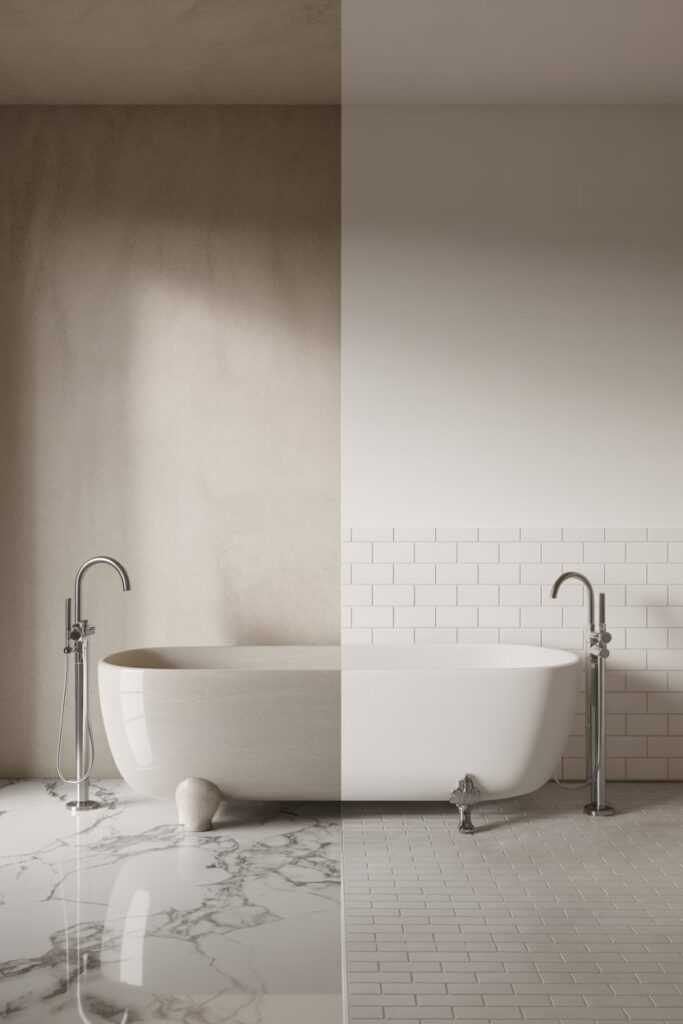
Installing a freestanding tub yourself can cut labor costs. However, you’ll need to buy the right tools and materials.
Plumbing supplies can add up fast, especially if your setup is complex.
Hiring a pro for installation usually leads to a quicker and more reliable job. While the upfront cost is higher due to labor, it helps avoid costly mistakes later.
When weighing DIY against professional installation, think about warranties. Many pros offer warranties on their work, giving you peace of mind.
A DIY job lacks this benefit, which could mean higher costs if problems come up later.
Shop the best freestanding tubs for your bathroom on Amazon
Skill Requirements
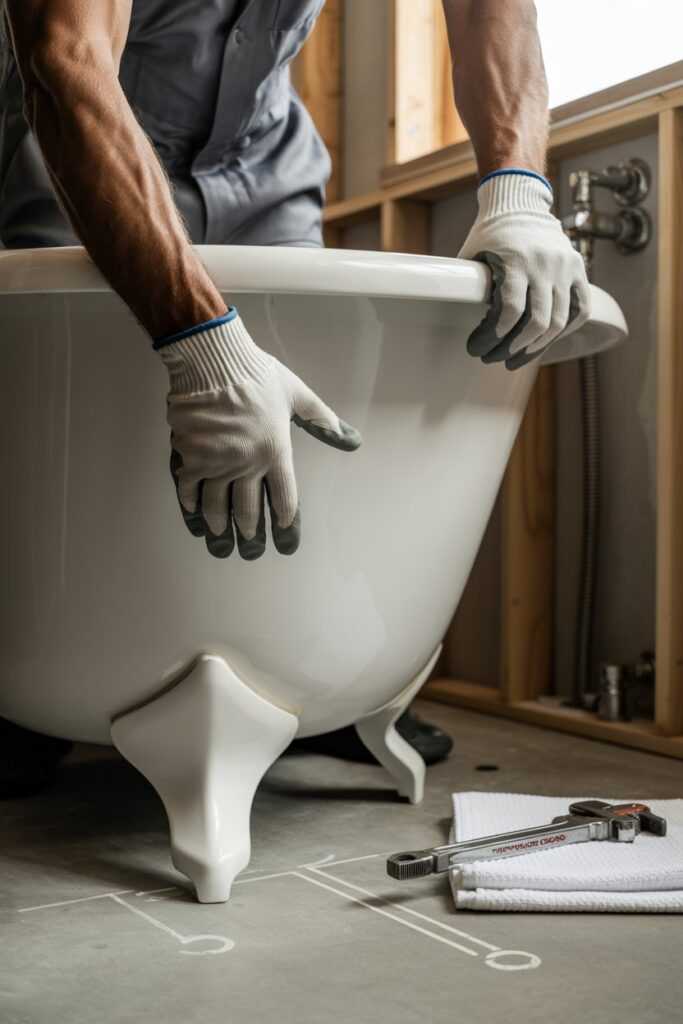
Installing a freestanding tub needs basic plumbing skills. You should know how to connect water supply lines and drain pipes. If you’re confident in these tasks, you’re on the right track.
You’ll also need to use tools like wrenches, levels, and silicone sealant. These tools help position your tub correctly and secure it, preventing leaks and instability.
Measuring and planning are key steps. Accurate measurements and a clear plan for the tub’s placement can save you from problems later. Make sure to have a solid installation plan.
Time Investment
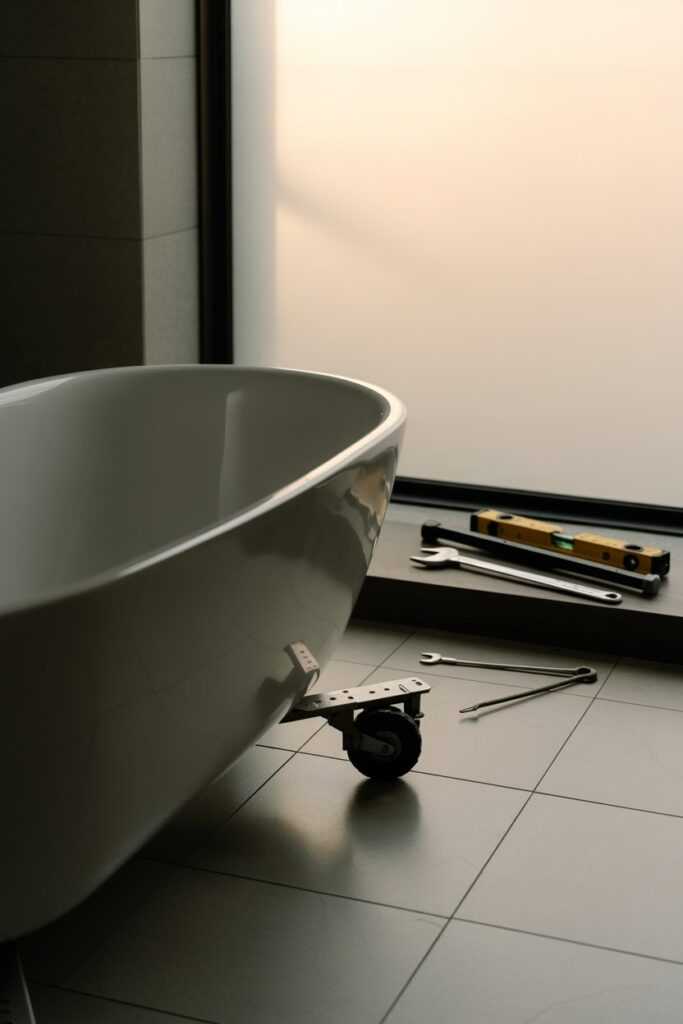
Installing a freestanding tub yourself can be rewarding but takes time. You might spend several weekends on plumbing and securing the tub.
Hiring a professional can cut this time down, often finishing the job in one day.
DIY installation needs some plumbing skills and tools. If you’re inexperienced, unexpected issues may cause delays.
A professional is ready for problems, ensuring quick and efficient completion.
Doing it yourself may save money, but consider the time commitment. Balancing work, family, and a DIY project can be tough.
Professionals manage everything, letting you focus on other important parts of your life.
Check these top-rated freestanding tubs available now on Amazon
Tools and Materials
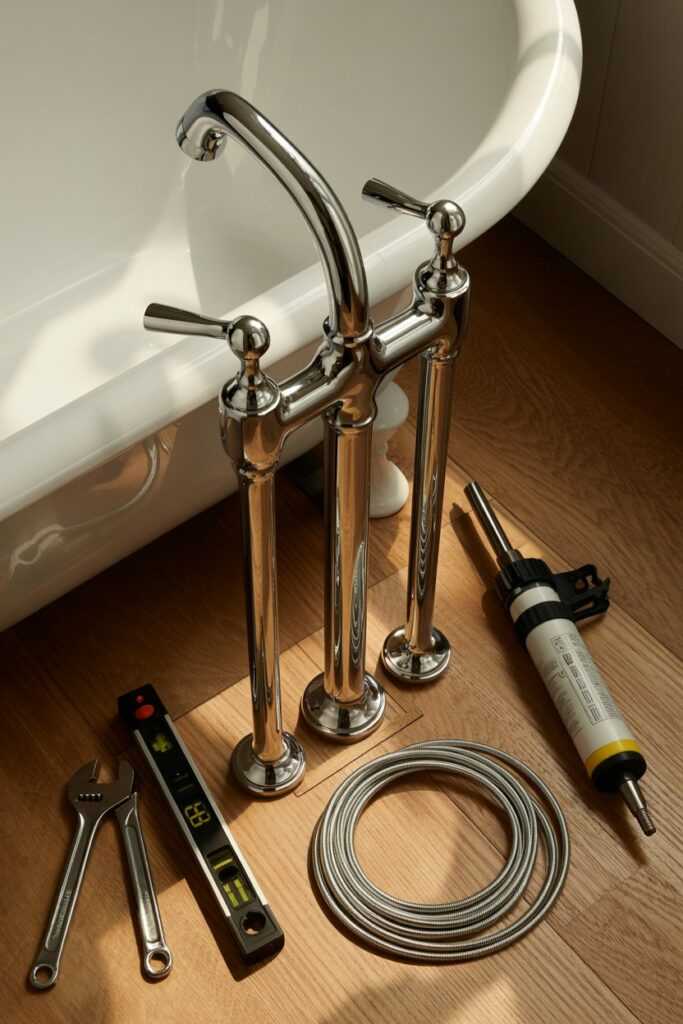
For DIY freestanding tub installation, you’ll need basic tools like a wrench, a level, and silicone sealant.
These tools help you place the tub securely and level. This is key to preventing leaks and ensuring a stable bathing experience.
Professionals often use specialized tools, like pipe cutters and strong adhesives. These tools lead to a more durable installation.
Their expertise also helps them tackle any plumbing surprises during the process.
When comparing DIY and professional installations, think about the materials. DIY kits usually include everything for a basic setup.
In contrast, professionals often choose higher-quality fittings and materials for better performance and longevity of the tub.
Quality of Work
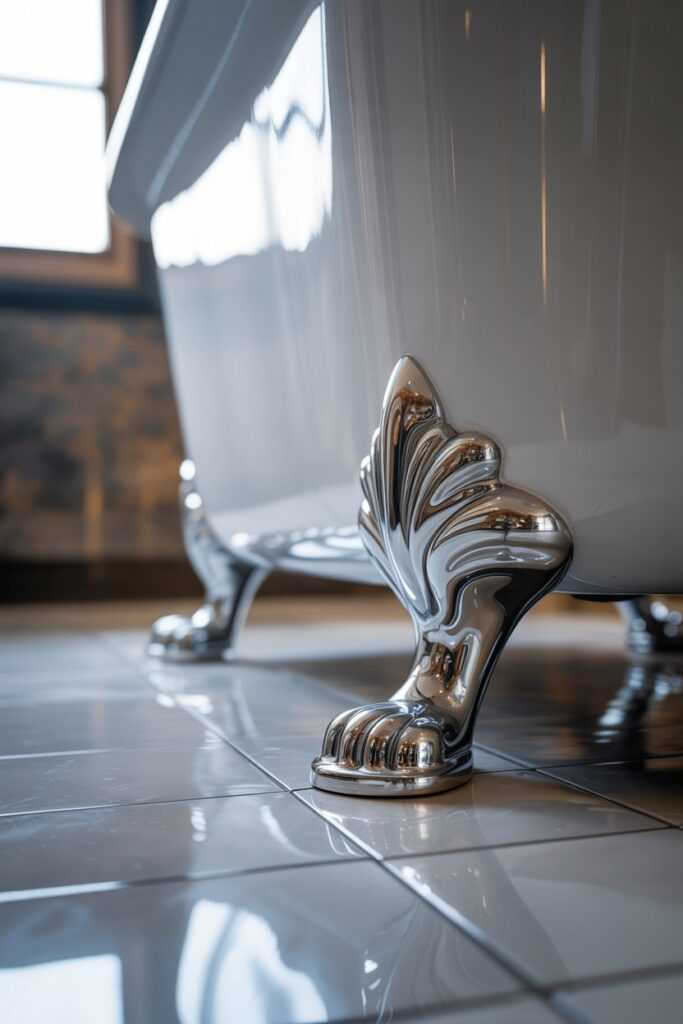
Installing a freestanding tub yourself can save money, but it may lead to uneven surfaces or leaks if not done right.
Professionals ensure everything is level and watertight, giving you peace of mind and a polished finish.
DIY installation takes a lot of tools and time. Professionals bring the right tools and experience, making the job faster and less stressful.
They also manage unexpected issues that may come up during the installation.
A professional installation usually includes a warranty. This covers future problems related to the work, saving you from costly repairs later.
Investing in professional help can provide long-term benefits.
Discover stylish freestanding tubs you can easily order from Amazon
Safety Concerns
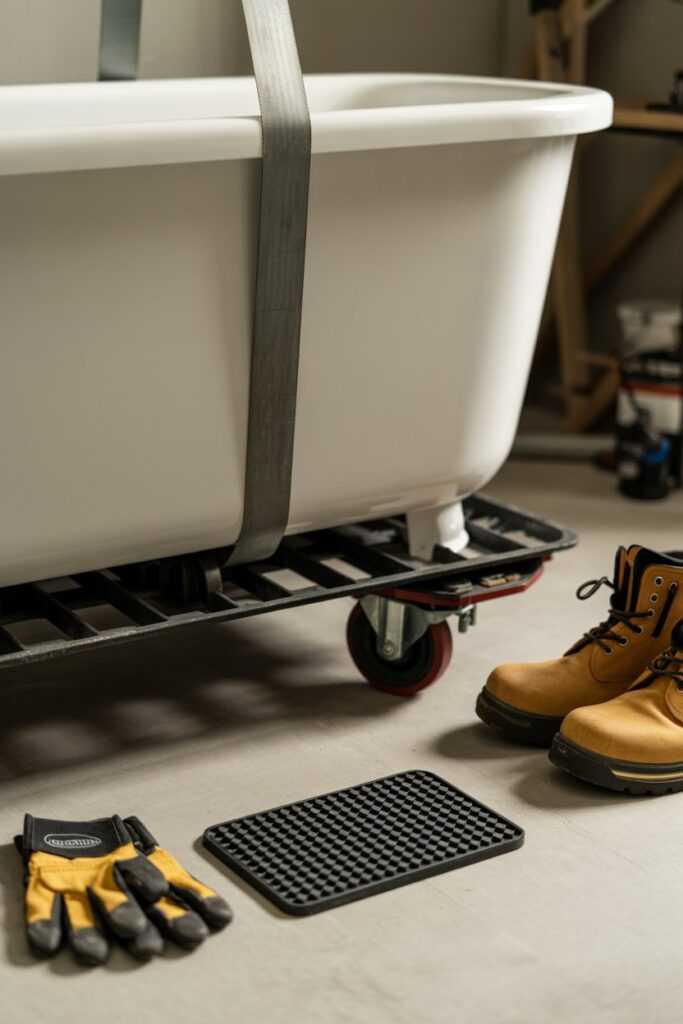
Installing a freestanding tub can be tricky. If not done correctly, it may cause water leaks and serious damage to your home.
Hiring a professional ensures the job is done right and helps avoid costly mistakes.
This installation involves heavy lifting and precise placement. Without the right equipment and experience, it can be hazardous.
Professionals have the tools and skills to handle these challenges safely, reducing injury risks.
Electrical and plumbing work is often part of the installation. If mishandled, it can pose serious risks.
Professionals are trained to meet safety standards and codes, ensuring your installation is safe and compliant.
Conclusion
In the end, your choice to install a freestanding tub yourself or hire a pro depends on your budget, skills, and time.
DIY can save you money, but it takes more effort and know-how. Hiring a pro offers a hassle-free experience, but it costs more. Weigh your options and decide what’s best for you.
Is It Hard to Install a Freestanding Tub Yourself?
Installing a freestanding tub can be tricky, but it’s doable with plumbing knowledge.
You’ll connect the water supply and drain, check that the tub is level, and seal everything to avoid leaks.
Many homeowners underestimate the time and precision needed, leading to mistakes.
If you’re handy with tools and patient enough to measure carefully, you can manage it. If not, hiring a professional is usually a safer choice.
How Much Does It Cost to Install a Freestanding Tub?
The cost depends on whether you choose DIY or professional help. Doing it yourself cuts labor costs, but you’ll still need tools, supplies, and possibly better materials.
Professional installation costs more at first due to labor charges. However, it can help avoid costly mistakes later. Many pros offer warranties, adding long-term value.
What Tools Do I Need for DIY Freestanding Tub Installation?
You’ll need at least a wrench, level, and silicone sealant. These tools help position and seal the tub securely.
Depending on your plumbing, you might also need pipe cutters and adhesives.
A good DIY kit may have some supplies, but pros usually use better fittings and tools. This can make a big difference in durability.
Is Professional Freestanding Tub Installation Worth It?
For many homeowners, yes. Professional installation makes sure the tub is safe, level, and leak-proof. It also helps fix any plumbing issues quickly.
Another big benefit is peace of mind. Most pros provide warranties on their work.
This can save you from future repair costs. If you lack plumbing experience, hiring help is often a wise choice.
What Safety Risks Come with Installing a Freestanding Tub?
Installing a tub requires heavy lifting, careful placement, and water connections. Without the right tools and methods, you could hurt yourself or cause water damage.
Some installations may also include electrical parts, which can be dangerous if not done right.
Professionals know how to manage these risks and ensure everything meets safety standards.
